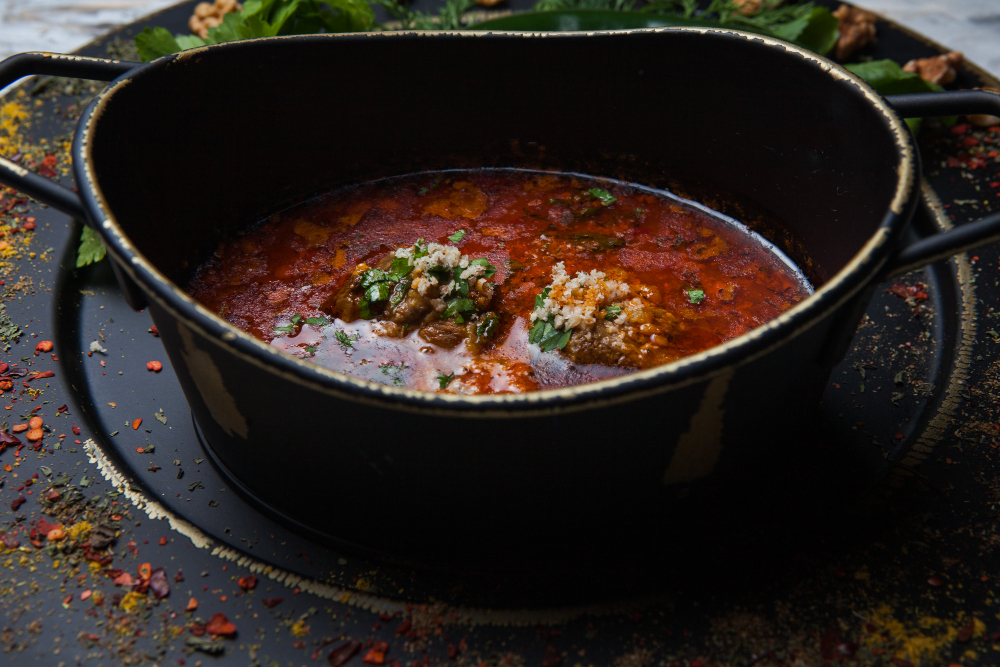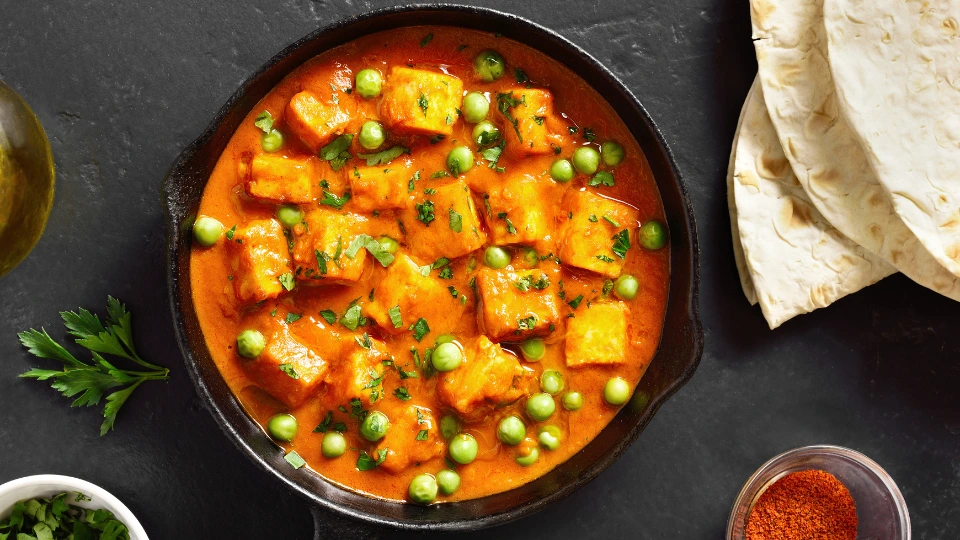Introduction
When it comes to Indian cuisine, nothing elevates a dish quite like the magic of desi tadka. The sizzling tempering of spices in hot oil or ghee not only fills the kitchen with irresistible aromas but also transforms simple meals into flavorful masterpieces. Whether it’s dal, sabzi, or a wholesome curry, the addition of desi tadka adds richness, depth, and tradition to every bite. For generations, families have cherished this culinary technique, making it a signature of authentic Indian home cooking that connects us to our roots and flavors of our heritage.
In this blog, we will explore the essential spices that make desi tadka truly special. From the earthy cumin seeds to the fiery red chilies, each spice brings its own unique aroma and taste to the table. We’ll dive into what makes these spices important, how they enhance traditional flavors, and why incorporating them into your meals is a must. By the end, you’ll not only understand the magic of desi tadka but also discover why Maharaja Riyasat is your trusted source for authentic Indian spices. Explore our spice collection here.
Things to Know Before Using Desi Tadka Spices
Before diving into the individual spices, it’s important to understand how desi tadka works and why it’s a fundamental part of Indian cooking. Tadka, also known as tempering, involves heating oil or ghee and adding whole or ground spices to release their essential oils and flavors. This process creates a base of aroma and taste that infuses the entire dish. Without this step, Indian food can often feel incomplete, lacking the depth and balance that spices provide.
Knowing which spices to use and how to use them is equally important. Each spice reacts differently when exposed to heat—some release their fragrance quickly, while others need time to toast gently. Additionally, pairing the right spices with the right dishes ensures a harmonious balance of taste. Let’s break down the essential elements you must know before preparing a perfect desi tadka.
The Role of Oil or Ghee in Tadka
The foundation of a great tadka lies in the fat you choose. Traditional Indian cooking often favors ghee for its rich, nutty flavor, which adds depth to dals and curries. Alternatively, vegetable oils, mustard oil, or sunflower oil are also popular choices depending on the dish and regional traditions. Each type of fat influences how the spices release their flavors, making it a crucial decision in cooking with spices.
When the oil or ghee is heated correctly, it becomes the perfect medium to crackle cumin seeds, sizzle mustard seeds, or fry garlic and onions until golden. This quick process enhances the aroma of the spices, creating a flavorful tempering that elevates the entire dish. Choosing the right cooking fat ensures that your desi tadka is not only authentic but also delicious and memorable.
Importance of Fresh and Authentic Spices
The quality of spices can make or break your tadka. Using fresh, authentic Indian spices guarantees maximum flavor and aroma. Over time, spices lose their potency, and stale spices will result in a dull tadka. This is why sourcing from trusted brands like Maharaja Riyasat ensures that every pinch of cumin, mustard, or turmeric retains its natural oils and essence.
Authentic spices not only enhance taste but also preserve the cultural significance of traditional flavors. Many households take pride in stocking their spice boxes with hand-picked, high-quality ingredients. Investing in authentic Indian food staples means you’re not just cooking—you’re creating an experience that mirrors the richness of India’s culinary heritage.
Balancing Heat and Flavor
Desi tadka is all about balance. Some spices bring heat, like dried red chilies or chili powder, while others add earthy tones, such as cumin and coriander. Too much heat can overpower a dish, while too little may leave it bland. The secret lies in creating a blend where each spice complements the other.
Balancing flavors doesn’t just mean spice levels—it also involves harmonizing sweet, sour, salty, and bitter notes. For example, hing (asafoetida) adds a pungent yet savory element, while curry leaves bring freshness. Understanding this balance ensures that your desi tadka spices work in harmony, enhancing your dish rather than dominating it.
Timing Matters in Tempering
One of the most important aspects of tadka is timing. Adding spices to oil that’s too hot can cause them to burn, resulting in bitterness. On the other hand, adding them to lukewarm oil prevents them from releasing their full aroma. Mastering the art of timing ensures that your spices bloom to perfection.
For instance, mustard seeds should be allowed to crackle fully before adding the next ingredient, while garlic should be fried until just golden to avoid bitterness. Proper timing transforms ordinary spices into a fragrant infusion that defines the soul of Indian cooking with spices.
Regional Variations in Desi Tadka
While the concept of tadka remains the same across India, the choice of spices varies by region. In South Indian cuisine, curry leaves and mustard seeds dominate, while in North India, cumin, garlic, and red chilies are more common. These variations reflect the diversity of Indian flavors and traditions.
Exploring these regional differences allows you to experiment with spice blends in your own kitchen. Whether you prefer the fiery heat of Rajasthani tadka or the aromatic flavors of South Indian dishes, regional variations showcase the versatility of authentic Indian food. This cultural richness is what makes desi tadka an art form rather than just a cooking technique.
Essential Desi Tadka Spices
Cumin Seeds (Jeera)
Cumin seeds are one of the most widely used spices in desi tadka. Known for their warm, earthy flavor, they add depth to dals, curries, and vegetable stir-fries. When added to hot oil, they release a nutty aroma that instantly enhances the dish. Beyond taste, cumin is also valued for its digestive properties, making it a staple in Indian kitchens.
Incorporating cumin seeds into your tadka not only boosts flavor but also connects you to traditional cooking practices. Their versatility allows them to complement a variety of dishes, whether it’s a simple dal tadka or a rich curry. Discover cumin seeds at Maharaja Riyasat.
Mustard Seeds (Rai)
Mustard seeds bring a sharp, tangy flavor that adds vibrancy to dishes, particularly in South Indian and Maharashtrian cuisine. When fried in hot oil, they pop and crackle, releasing a distinct aroma that forms the base for many vegetable preparations. They are often paired with curry leaves for an authentic Indian food experience.
These tiny seeds may be small, but their impact on taste is powerful. They add a depth of flavor that transforms everyday meals into something memorable. Whether you’re preparing sambhar or stir-fried vegetables, mustard seeds are essential for creating the perfect desi tadka.
Dried Red Chilies
Dried red chilies are the spice that brings heat and boldness to desi tadka. They infuse the oil with a smoky, fiery flavor that enriches dals, curries, and chutneys. Depending on the type of chili used, they can range from mildly spicy to intensely hot, making them adaptable to different preferences.
The visual appeal of red chilies sizzling in oil also adds to the sensory experience of cooking. They symbolize the boldness of Indian flavors and remind us that spice is not just about heat—it’s about creating complexity in every bite.
Asafoetida (Hing)
Asafoetida, or hing, is a unique spice often used in small quantities for its pungent aroma and flavor. It’s particularly popular in vegetarian cooking, where it enhances the taste of dals and curries without the use of onions or garlic. When fried in oil, it mellows into a savory, umami-like flavor that enriches the dish.
Hing is also known for its digestive benefits, making it a valued addition to Indian households. Despite its strong smell in raw form, hing transforms beautifully in tadka, becoming a subtle yet powerful contributor to authentic Indian food.
Curry Leaves
Fresh curry leaves are an indispensable part of South Indian tadka. Their aromatic, citrusy flavor elevates dishes like sambhar, rasam, and coconut-based curries. When added to hot oil, they release an irresistible fragrance that lingers throughout the meal.
Curry leaves are more than just a garnish—they’re a flavor powerhouse that defines regional authenticity. Their ability to transform simple dishes into something extraordinary is why they hold a special place in the spice box of Indian households.
Turmeric (Haldi)
Turmeric is not only known for its vibrant yellow color but also for its earthy, slightly bitter taste. It’s often added after the tempering stage to lend both flavor and health benefits to dishes. Rich in curcumin, turmeric is celebrated for its anti-inflammatory properties, making it an essential part of everyday cooking with spices.
A pinch of turmeric in tadka adds warmth and a golden hue to dals, curries, and vegetable dishes. It symbolizes the health and tradition intertwined in Indian cooking, making it indispensable in any spice collection.
Garlic and Onion
Though not always classified strictly as spices, garlic and onion are often added to tadka for their robust flavors. Garlic adds a sharp, savory kick, while onions provide sweetness and body to the dish. Together, they create a flavorful foundation that enhances the richness of curries and gravies.
These ingredients not only build layers of taste but also resonate with homestyle Indian cooking. Their combination with traditional spices completes the desi tadka experience, turning simple meals into comforting, wholesome delights.
Why Choose Maharaja Riyasat for Authentic Desi Tadka Spices?
When it comes to preparing authentic desi tadka, the quality of your spices determines the outcome. Maharaja Riyasat offers a premium range of handpicked, authentic Indian spices that preserve the tradition and taste of Indian cooking. Each product is carefully sourced to ensure freshness, aroma, and potency, so your dishes turn out flavorful every time.
By choosing Maharaja Riyasat, you’re not just buying spices—you’re investing in authenticity, quality, and a connection to India’s culinary heritage. Our extensive spice collection ensures you’ll find everything you need, from cumin and mustard seeds to turmeric and curry leaves. Shop authentic spices now.
Conclusion
Desi tadka is more than just a cooking technique—it’s the soul of Indian cuisine. The careful tempering of cumin, mustard seeds, red chilies, hing, curry leaves, and other spices transforms ordinary meals into extraordinary culinary experiences. Each spice carries tradition, health benefits, and bold flavors that reflect India’s diverse food culture.
By understanding how to balance flavors, master timing, and choose authentic spices, you can recreate the magic of desi tadka in your own kitchen. And with Maharaja Riyasat’s premium spice collection, you have everything you need to bring authentic Indian food to life. Whether you’re cooking a simple dal or an elaborate curry, let desi tadka turn every meal into something truly special.

